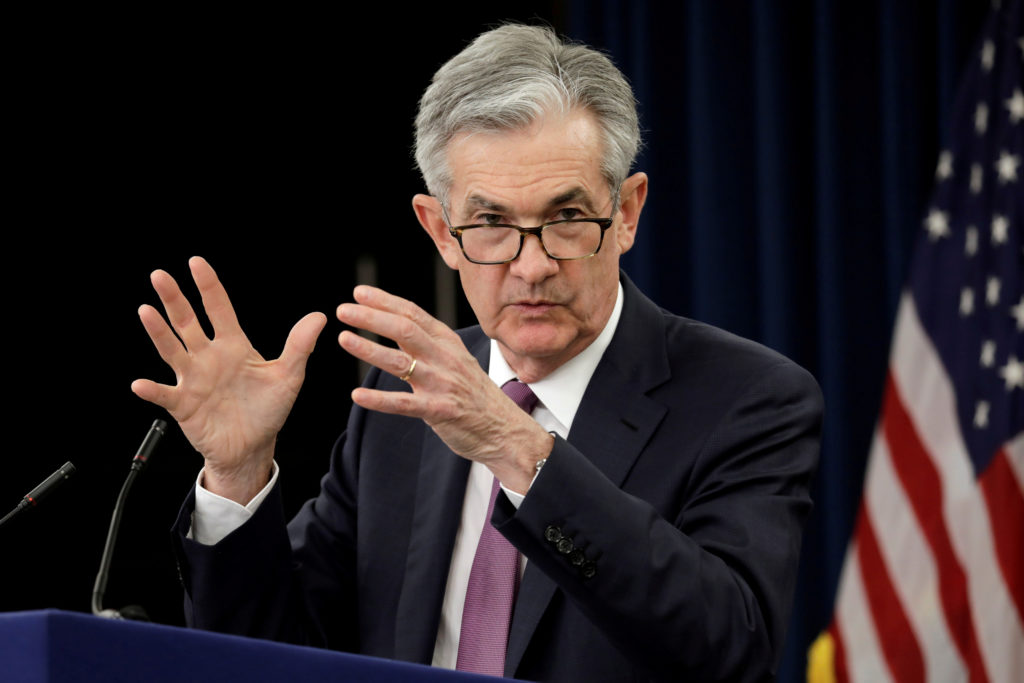The two main alternatives for FED
It seems widely assumed that the Federal Reserve will take policy rates up to a certain level, hold them there through 2023 and early 2024 and then start to cut.

The market puts the peak rate of the FED at around 4.5%. Photo: FED Chairman Powell
>> When FED will pause rate hikes?
The market puts the peak rate of the FED at around 4.5%; very similar to the Fed’s own median forecast. But there’s at least two ways in which these forecasts could be wrong.
The difficulty for the market, and the Fed, is that we’ve not had a tightening cycle like this since the 1980s. Few can remember that. Most have memories of recent cycles and that creates a false sense of security about how the cycle might end. For instance, the last two Fed tightening cycles saw rate hikes no larger than 25-bps and, apart from the faltering start to the 2015-18 tightening cycle, there was generally a pretty clear pattern of 25-bps hikes.
Once rates reached a peak, they were held there for eight months before being cut again. In the prior cycle, between the middle of 2004 and the middle of 2006, rates were hiked 25-bps per meeting and the peak was then kept in place for around 15 months.
In other words, these were very orderly tightening cycles; the Fed kept the size of rate hikes small and constant, it did not have to re-start rate hikes after a pause, and nor was it forced to suddenly slash rates because some sort of crisis happened. If we fast-forward to today the market sees the rate peak lasting for some time as well. Market pricing is leading to the idea that the fed funds target will reach a peak early next year and the first cut won’t come until the spring of 2024 at the earliest.
The FOMC’s own median projection is that there will be 75-bps of rate cuts, but not until 2024 and, if we listen to FOMC members they constantly argue that there will be no rate cuts next year. It seems that they hope to get rates up to a terminal level in coming months and then to hold them there for a time, just as they have done in the past.
As we suggested earlier, history is not a reliable guide this time around. Inflation was never a significant problem through the last two cycles, but it is now. The last time inflation was a significant problem, in the 1970s and 1980s rates were moved all over the place with rapid tightening followed by sharp easing and then followed again by sharp rate hikes. It could not be further away from the experience the market has enjoyed through the last two tightening cycles.
>> FED and its impacts on the US labour market
Now clearly very few, including ourselves, would suggest that we are about to return to the rate volatility we saw during the 1970s and 80s. But something that is more similar to this, and less reflective of the sedate experiences of the last two cycles, certainly seems possible. In Mr. Steve Barrow, Head of Standard Bank G10 Strategy’s view, the two main alternatives to the way the market is priced right now would seem to be as follows.
The first is that the Fed thinks it has reached the terminal rate, and so pauses, only to find that inflation is not defeated and has to start hiking again.
The other main alternative is that the Fed stops hiking but finds it has to reverse course very quickly because it has overtightened causing both growth and inflation to plummet and increasing the possibility a severe financial squeeze.
“We are not necessarily saying that either scenario is more likely than the rather more sedate picture that’s priced into the market but, if pushed, we’d certainly argue that events are more likely to go down the latter route. As inflation eases down and the unemployment rate starts to climb, we suspect that the markets will become impatient; pushing for rate hikes before the end of 2023”, said Mr. Steve Barrow.
Should the Fed oblige, it will probably cause a re-steepening of the yield curve, substantial improvement in riskier assets and push the dollar down. If the Fed resists, at least initially, then the yield curve would probably stay inverted, asset prices soft and the dollar stronger. In the end, resistance will probably give way and, while that would be a positive development for asset prices, investors will have to hope that the Fed has not waited too long to ease just as it seems as if it has waited too long to tighten.








